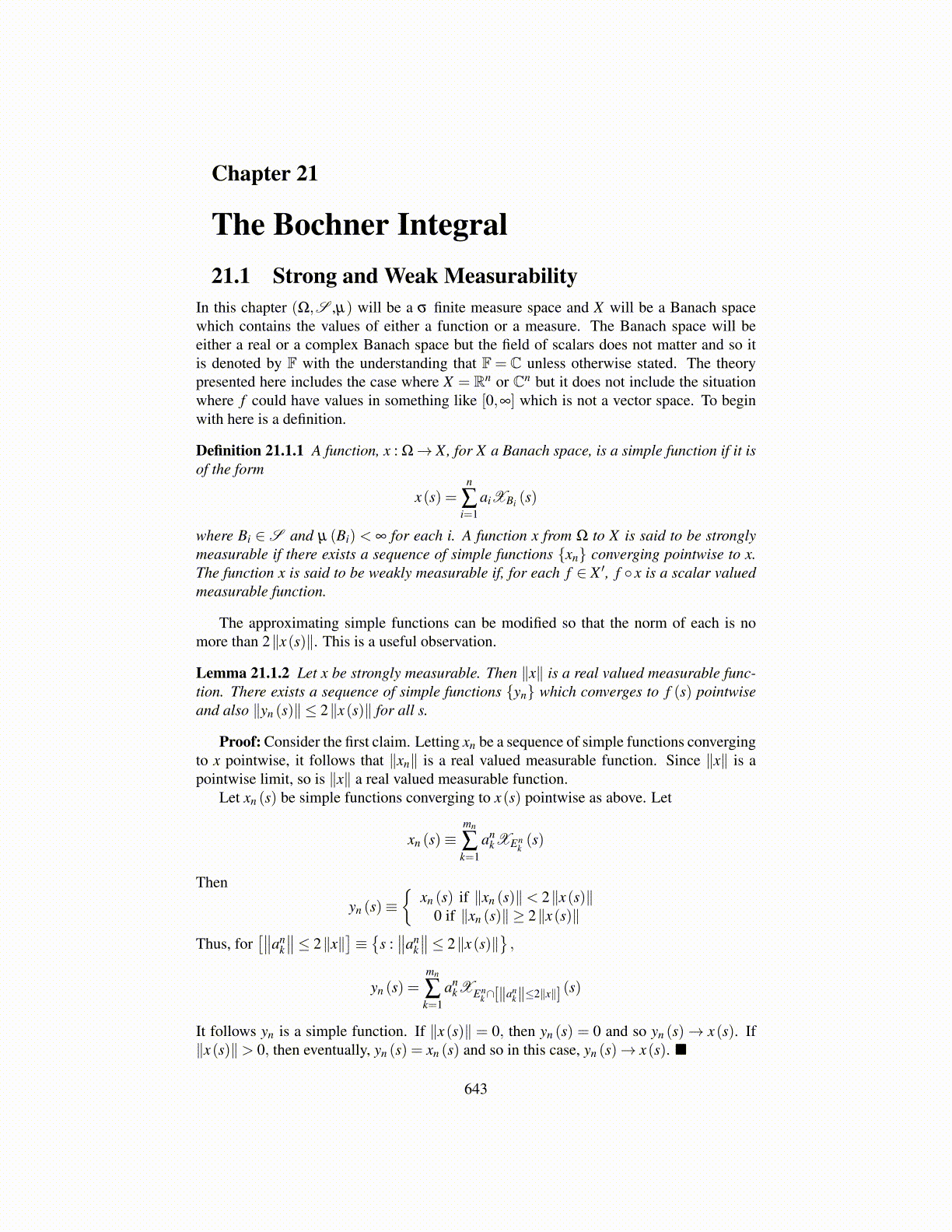
Chapter 21
The Bochner Integral21.1 Strong and Weak Measurability
In this chapter (Ω,S ,µ) will be a σ finite measure space and X will be a Banach spacewhich contains the values of either a function or a measure. The Banach space will beeither a real or a complex Banach space but the field of scalars does not matter and so itis denoted by F with the understanding that F= C unless otherwise stated. The theorypresented here includes the case where X = Rn or Cn but it does not include the situationwhere f could have values in something like [0,∞] which is not a vector space. To beginwith here is a definition.
Definition 21.1.1 A function, x : Ω→ X, for X a Banach space, is a simple function if it isof the form
x(s) =n
∑i=1
aiXBi (s)
where Bi ∈S and µ (Bi) < ∞ for each i. A function x from Ω to X is said to be stronglymeasurable if there exists a sequence of simple functions {xn} converging pointwise to x.The function x is said to be weakly measurable if, for each f ∈ X ′, f ◦ x is a scalar valuedmeasurable function.
The approximating simple functions can be modified so that the norm of each is nomore than 2∥x(s)∥. This is a useful observation.
Lemma 21.1.2 Let x be strongly measurable. Then ∥x∥ is a real valued measurable func-tion. There exists a sequence of simple functions {yn} which converges to f (s) pointwiseand also ∥yn (s)∥ ≤ 2∥x(s)∥ for all s.
Proof: Consider the first claim. Letting xn be a sequence of simple functions convergingto x pointwise, it follows that ∥xn∥ is a real valued measurable function. Since ∥x∥ is apointwise limit, so is ∥x∥ a real valued measurable function.
Let xn (s) be simple functions converging to x(s) pointwise as above. Let
xn (s)≡mn
∑k=1
ankXEn
k(s)
Then
yn (s)≡{
xn (s) if ∥xn (s)∥< 2∥x(s)∥0 if ∥xn (s)∥ ≥ 2∥x(s)∥
Thus, for[∥∥an
k
∥∥≤ 2∥x∥]≡{
s :∥∥an
k
∥∥≤ 2∥x(s)∥},
yn (s) =mn
∑k=1
ankXEn
k∩[∥ank∥≤2∥x∥] (s)
It follows yn is a simple function. If ∥x(s)∥ = 0, then yn (s) = 0 and so yn (s)→ x(s). If∥x(s)∥> 0, then eventually, yn (s) = xn (s) and so in this case, yn (s)→ x(s).
643